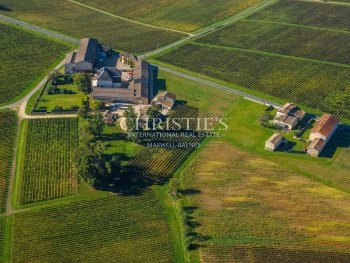What if biodynamic was a practical and not an esoteric way of growing wine?

hen it comes to the effectiveness of biodynamic winegrowing, its opponents leave no room for discussion, claiming that its origins and techniques disqualify it right off the bat. But for French consultant winemaker Nicolas Jamin, initial research findings should remove any deadlocks. He points to positive conclusions for biodynamics released by INRA in Dijon on the physico-chemical and microbiological qualities of soils, along with a study by INRA in Colmar on the stimulation of natural vine defences published in 2018 by Nature, and research by Kedge on the quality of wines published in 2021 by Ecological Economics. As it stands, “there are things that work, that we are unravelling through research and that we can begin to understand”, claims Jamin, who admits that “there are others that are validated by practical implementation, where we can find physical explanations for some of them, but there are others where we do not understand how they work”.
Even though no explanations or reasons are given for all the techniques used in biodynamic winegrowing, the issue is not about beliefs, insists Jamin. He rejects the idea that biodynamics work for those who believe in them, ascribing their efficacy to significant time spent out in the field and constant vineyard monitoring, paving the way for greater prevention than with conventional winegrowing. “Nobody is a biodynamic believer. We use it because there are results. We are all agronomists, and we are also French, so logical thinkers. We think it works, but we’re not believers. It's not about faith. Science and agriculture are my disciplines, and they are not incompatible with biodynamics,” explains Jamin.
Among the other arguments used to discredit biodynamics is the parallel drawn between the quantities used for preparations and homeopathy. “It's not true. Put 100g of cow dung in 40 litres of water to treat one hectare, I challenge anyone to drink the dynamised water! It's brown...” says Jamin, who believes doses for biodynamic winegrowing can be referred to as low, but not minuscule homeopathic doses. “These are quantities that activate and stimulate the plant's metabolic pathways”, says the consultant winemaker. He points out that changes in techniques on wine estates are not confined to biodynamics, and that the results therefore have multiple factors and are not only linked to biodynamic preparations or the lunar calendar. “Biodynamics is not the be all and end all”, says Benjamin Sichel, who believes “biodynamic winegrowing is a tool”. Château Angludet is testing several new vineyard management techniques, including planting trees in the vineyards, leaving uncrushed canes between the vines after pruning, reducing the amount of tillage during the season in order to flatten weeds and create a mulch and not trimming the leaves to preserve growth and avoid the canopy from bunching up.






